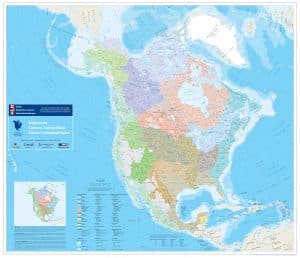What is a Bioregion?
A bioregion is a shorthand designation for ‘bio-cultural region’. At it’s most simple – it means life place.
It is rooted in the idea that culture stems from placed and that human cultures develop in relation to the natural ecosystems they inhabit. Bioregions are defined by characteristics of the natural environment rather than by man-made divisions, and are the sum of the cultures, ecoregions & ecosystems, and watersheds that arise from a particular place. These spaces are the largest areas where a person can walk, and still find connections to other people based on shared place. These physical boundaries, and the geographic, topographic and living flora and fauna all work together to create a ‘bio-region’.
“A bioregion is defined in terms of the unique overall pattern of natural characteristics that are found in a specific place. The main features are generally found throughout a continuous geographic terrain and include a particular climate, local aspects of seasons, landforms, watersheds, soils, and native plants and animals.” (Peter Berg)
Bioregionalists and bioregional movements use these containers to break down large issues, work with those already out in the community making the changes we need happen, create social, political, economic – and cultural shifts towards healthier communities, and build hubs that connect other people in a bioregion to those solutions.
A bioregion gives measurability, scale and impact to problems which often seem far removed or global in nature – in which people may feel overwhelmed or disconnected from.
“A bioregion refers both to geographical terrain and a terrain of consciousness — to a place and the ideas that have developed about how to live in that place.” (Peter Berg and Raymond Dasmann)
Bioregions have two distinct elements:
● SCIENTIFIC: defined by the physical landscape – geology, topology, hydrology, plate tectonics, geography, erosion, rainfall, soil type and variation – and the biological beings and ecosystems living with them, each distinct, each suited and evolved slightly differently. In this, we must ask – how is nature different in different areas, what natural diversity make these regions so different? and how does that impact what we should do?
● CULTURAL: the people and inhabitants living within the bioregion. The sum of our personal actions, and interpersonal relationships that make each area distinct – it is the food we grow, what we eat, our sports, music – the clothes we wear, our shared identity, our economy, governments and politics. In this, we must ask – how does where we live affect these things? What are things we can each do, that taken together, will see the world shift in healthier ways, and improve the well being of our communities and bioregion?
“A bioregion can be determined initially by use of climatology, physiography, animal and plant geography, natural history and other descriptive natural sciences. The final boundaries of a bioregion, however, are best described by the people who have lived within it, through human recognition of the realities of living-in-place.” (Peter Berg & Raymond Dasmann).
There will be no one right answer, or one right solution. Rather it will be hundreds of solutions working together, adapting to fit different needs of different backgrounds, locations and contexts, to achieve the real change that we want to see.

Key Takeaways:
How big is a bioregion? How is it’s scale defined? Below are a few key pointers:
- A bioregion is an area defined by natural boundaries, rather than arbitrary human made ones.
- A bioregion is the full extent of the watersheds within an interconnected area, the largest sense of scale based on physical similarities that makes sense.
- A bioregion can be made up of many ecosystems, soil patterns, weather types, and in terms of scale is larger than an ecoregion, and smaller than a continent.
- While borders within a bioregion may be transitional, soft and fuzzy, bioregional borders tend to be jagged, and hard, such as mountain ranges, peaks, ridges, volcanoes, continental uplifts, tectonic plates and faults. These hard edges define how energy flows within a set of boundaries.
- Bioregional boundaries don’t stop at waters edge, but should be stretched outwards until the physical edges reveal themselves.
- A bioregion is the smallest unit in which the ecosystems and inhabitants can be self sustaining. This includes human habitation (food, water, energy generation, production, transportation, consumption and waste streams). It can be as small as one island, or depending on the inhabitants, be a part of an archipelago or connected island chain.
- Bioregions are natural countries, which may contain many nations, inhabitants and peoples.
- Culture plays a part in defining bioregions. Humans play a large role as part of their ecosystems, and shared concerns, values, language and culture stem from sharing a land base.
